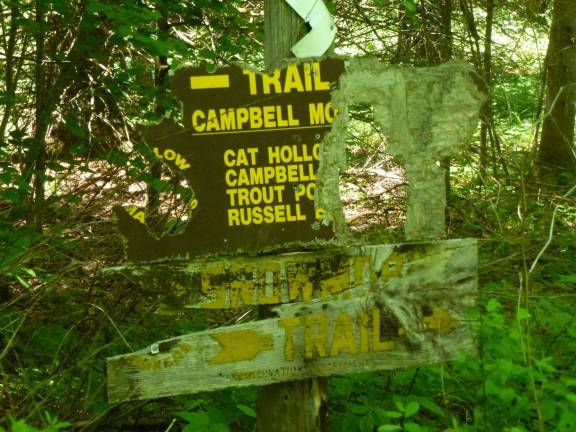The tug of the not-so-high peaks

I love the Adirondacks and the Catskills in equal measure. The Adirondacks have star quality. They have the highest peaks in New York. But that has led to trails so popular, and so damaged, some are little more than routes. The most famous are like those muddy half-pipes you see at obstacle competitions. The challenge is to keep your face out of the goop. After a rain, the routes turn into gushing streams. The intricate root systems exposed and polished by legions of boots are just as slippery as the mud.
The Catskills, by contrast, have always been more sure footed. There are more rocks, for one thing, and as long as they aren’t loose, you can use them to brace yourself, rest or push ahead. There isn’t as much water undermining the terrain. And, until, now, there haven’t been nearly as many hiker wearing grooves into the mountainsides. In recent years, though, the Catskill high peaks are becoming as popular, and degraded, as the Adirondacks.
Take the Peekamoose blue hole. This perfect swimming hole, continually refreshed by water of a hue that gives this pearl its name, and benignly surrounded by smooth, flat rocks, was once also a perfect secret. That’s changed in the age of social media. We’ve seen a steady trickle turn into a deluge of people headed there with towels over shoulders, coolers and boom boxes in tow, for a day of chilling and littering. News stories started to appear: masses of trash were accumulating at the blue hole, bottles, cans, wrappers, dirty diapers, busted lawn chairs. I’ll leave to the philosophers the question of why people seeking beauty destroy beauty. I can only feel relief, and a little sadness, that the state has stepped in, installing stewards to educate the blue hole-loving masses on this basic point, a last-ditch try to keep us from loving the place to death.
What I mourn most is the loss of peace. And by peace, I mean the absence of humans. Cresting a high peak is exhilarating, but getting there often means cutting through a carnival of barking humanity as thick on the trail as on a rush hour escalator.
The human voice cuts through the woods like nothing else. The chatter of other hikers can follow you all day. Unlike Tom and me, some are just getting to know each other. Others have a lot to catch up on. I don’t blame them. Never a dinner-and-movie couple, Tom and I got to know each other peddling our bikes, and know each other better out on the trail. Anyone out there is kin to us. We’ve become fast friends with many hikers while sharing a mountaintop lunch. We carry extra water and snacks to give novices in a bind.
I know I’m being fussy. But here’s the good news: no matter how famous the park, you can find the quiet you seek. As with people, the elite peaks get all the attention. The high peaks in the northeastern Catskills have the glamor and the crowds while the western Catskills remain obscure, except to fly fishermen headed to the Beaverkill. The peaks are under 3,500 feet so don’t qualify as “high.” The views are not panoramic. But the trails are so quiet, we have seen wildlife we’ve never seen on the eastern side. A bobcat walking the overgrown trail in Cat Hollow was oblivious long enough for us to get a good look. We surprised a black bear rounding a bend.
And there are some nice views too. My favorite is the Split Rock lookout. The trail getting there is a bit overgrown, so follow the blazes to make sure you don’t step off path.
Another drawback of the trail less traveled? Using your face to break the spider webs that form across it. So we were happy when on that trail recently to hear the chatter of hikers headed our way. When we met up, it was like looking into a mirror: a middle-aged couple alone in the woods, rubbing itchy webs off their faces, glad to know the rest of their trip would be clear sailing.
SNEAK PEEK:
Bonus: The drive to a western Catskills trailhead may take you across an historic covered bridge.
Trailhead: Route 206/7 in Cat Hollow, Downsville, N.Y., Delaware Wild Forest
Trail: Campbell Mountain Trail (blue) to Pelnor Hollow Trail (blue)
Distance: Round-trip to Split Rock lookout: 10.3 miles